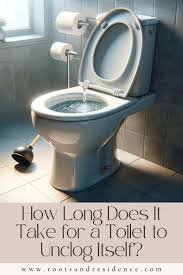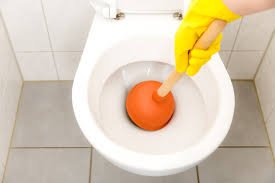How to Unclog a Toilet A Complete Guide to Fixing Blockages

Dealing with a clogged toilet is a common and frustrating issue many homeowners face at some point. When it happens, it’s essential to address the problem quickly and effectively to avoid further damage to your plumbing system. In this comprehensive guide, we’ll walk you through the steps on how to unclog a toilet, offer troubleshooting tips, and suggest professional solutions if necessary. Whether you’re a DIY enthusiast or prefer calling a plumber, understanding the best practices will save you time and money.
Table of Contents
Understanding the Basics: Why Does a Toilet Clog?
Before diving into the steps of how to unclog a toilet, it’s essential to understand why clogs occur in the first place. A toilet gets clogged when something prevents the water from flowing through the pipes, which could be due to various factors. The most common causes include:
- Excessive Toilet Paper: Sometimes, flushing too much toilet paper at once can block the drain.
- Foreign Objects: Flushing objects such as toys, wipes, or sanitary items can easily cause blockages.
- Low Water Levels: If the water in the toilet bowl is too low, it can lead to a lack of suction needed to flush waste properly.
- Hard Water Deposits: Over time, mineral buildup in pipes can cause a slow drain or complete blockage.
Knowing the cause of the clog will help you determine the best method to resolve it. Now, let’s dive into the specific steps on how to unclog a toilet.
Step-by-Step Guide: How to Unclog a Toilet

Clogging a toilet might seem like a daunting task, but with the right approach, you can clear the blockage yourself in no time. Here are several methods to try:
1. Use a Plunger
A plunger is the most common tool used to unclog a toilet. It’s simple to use and often highly effective for minor blockages.
How to Use a Plunger:
- Choose the Right Plunger: Make sure you’re using a toilet plunger, not a sink plunger. A toilet plunger has a flange at the bottom that creates a better seal and suction.
- Submerge the Plunger: Place the plunger into the toilet bowl, ensuring the rubber part fully covers the drain hole.
- Plunge With Force: Press down and pull up, keeping the plunger submerged in water. The pressure created should dislodge the clog.
- Repeat: If the water doesn’t start to drain, repeat the process for a few minutes. It may take several attempts before you successfully unclog a toilet.
2. Try a Toilet Auger
If a plunger doesn’t work, a toilet auger can help reach deeper clogs. A toilet auger is a long, flexible cable that you can feed into the toilet to break up or retrieve the blockage.
How to Use a Toilet Auger:
- Insert the Auger: Slowly feed the auger cable into the toilet drain while turning the handle clockwise.
- Find the Obstruction: Once you feel resistance, you’ve likely encountered the blockage. Keep turning the handle to either break it apart or grab the obstruction.
- Retrieve the Clog: If you’ve managed to grab the clog, pull it out carefully. If you’ve broken it apart, flush the toilet to ensure everything clears.
A toilet auger is a great tool if the plunger didn’t do the trick. It’s especially helpful for stubborn clogs that are deeper in the drain.
3. Use a Baking Soda and Vinegar Solution
For a more natural solution, baking soda and vinegar can work wonders. The chemical reaction between the two ingredients helps break down clogs caused by organic matter.
How to Use Baking Soda and Vinegar:
- Add Baking Soda: Pour 1 cup of baking soda directly into the toilet bowl.
- Add Vinegar: Follow it up with 2 cups of vinegar.
- Let It Sit: Allow the mixture to sit for about 30 minutes. The bubbling action helps break down the clog.
- Flush: After the solution has had time to work, flush the toilet to see if the blockage has cleared.
This method works best for minor clogs and can be a great first step in your quest to unclog a toilet without harsh chemicals.
4. Use Hot Water
Hot water can help soften clogs caused by toilet paper or grease. It’s a simple method that can work if the clog is relatively shallow and caused by softer materials.
How to Use Hot Water:
- Heat the Water: Boil a few liters of water on the stove. Be sure not to use water that’s too hot, as it can crack the porcelain.
- Pour Into the Toilet: Slowly pour the hot water into the toilet bowl from waist height. This will create enough force to help break up the clog.
- Wait and Flush: Let the water sit for about 10-15 minutes before flushing.
This method is highly effective when combined with the use of a plunger or other tools.
5. Try a Commercial Drain Cleaner
If the clog persists despite using a plunger or auger, you might want to consider a commercial drain cleaner. These products are formulated to dissolve clogs quickly and effectively.
How to Use a Commercial Drain Cleaner:
- Read Instructions: Follow the instructions on the product label carefully. Different cleaners may have varying applications.
- Pour the Cleaner: Pour the cleaner into the toilet bowl, ensuring it’s in contact with the clog.
- Wait and Flush: Allow the cleaner to sit for the recommended amount of time before flushing.
While drain cleaners can be effective, they should be used sparingly as frequent use can damage your plumbing over time. Be sure to wear gloves and avoid splashing the cleaner on your skin.
6. Call a Plumber
If all else fails, it may be time to call a professional plumber. Sometimes, clogs are too deep or complicated for DIY methods to resolve. A plumber can use specialized equipment like hydro-jetting or professional augers to clear the blockage.
When to Call a Plumber:

- Persistent Clogs: If you’ve tried everything and the toilet is still clogged, it’s time to get professional help.
- Frequent Clogs: If clogs are a recurring issue, a plumber can inspect your plumbing system for underlying issues, such as damaged pipes or tree root intrusion.
- Severe Blockages: For serious blockages, like those caused by tree roots or broken pipes, a plumber has the tools and expertise to resolve the issue.
Calling a plumber can be an expensive option, but it’s worth the investment if you’re unable to resolve the issue on your own.
Prevention Tips: How to Avoid Clogs in the Future
Once you’ve learned how to unclog a toilet, it’s important to implement preventive measures to reduce the risk of future clogs. Here are some tips to keep your toilet running smoothly:
- Use Toilet Paper Sparingly: Excessive toilet paper is one of the main causes of clogs. Use only as much as needed.
- Dispose of Wipes Properly: Never flush wipes, even those labeled as “flushable.” They can cause blockages in your plumbing.
- Avoid Flushing Foreign Objects: Ensure that nothing other than waste and toilet paper is flushed down the toilet.
- Regular Maintenance: Periodically check for slow drains or other signs of blockage and address them early.
- Install a Low-Flow Toilet: Low-flow toilets use less water, which can help prevent clogs caused by insufficient water flow.
Also read Fairy Lights Transforming Spaces with Enchanting Illumination
Conclusion
Knowing how to unclog a toilet is an essential skill for any homeowner. Whether you’re dealing with a minor blockage or a more severe clog, there are several methods you can try before resorting to professional help. Using a plunger, toilet auger, or natural remedies like baking soda and vinegar are often the most effective DIY solutions. If these methods don’t work, don’t hesitate to call in a plumber to avoid further damage to your plumbing system. By following preventive measures and regularly maintaining your toilet, you can reduce the likelihood of future clogs and keep your bathroom running smoothly.
Remember, unclogging a toilet doesn’t have to be stressful—armed with the right knowledge and tools, you can tackle this issue with confidence.





